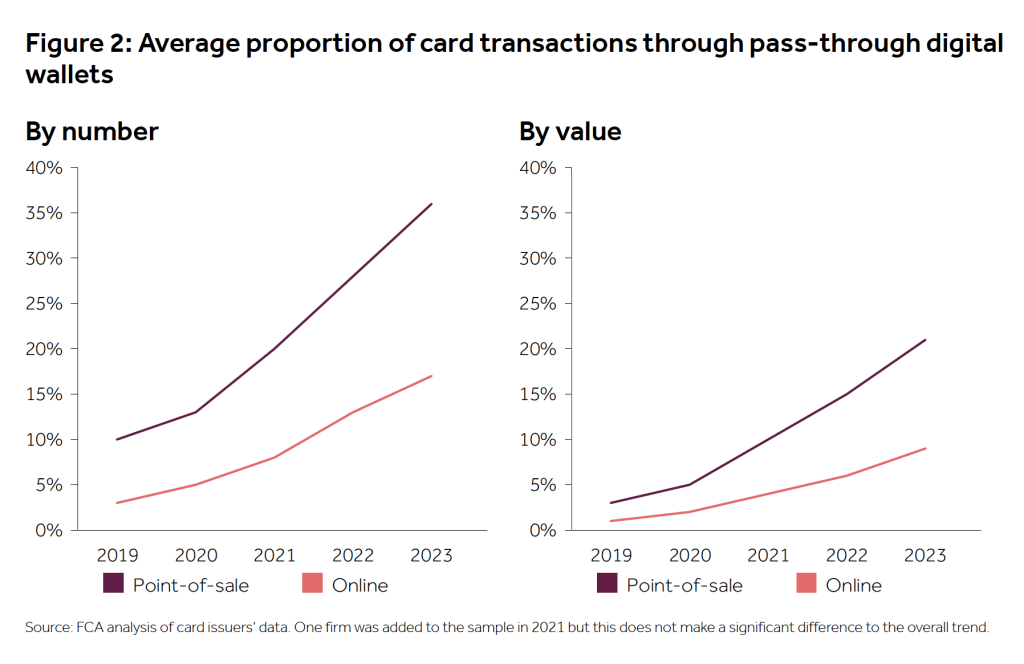Digital Assets
Preparing for the rise of super wallets
• 0 minute read
April 8, 2025

The financial services industry is readying to embrace the advent of ‘super wallets’, which extend mobile payment services beyond being a proxy for cash.
Over the past two decades, various mobile wallets have emerged — outside the global regulated financial system — that offer consumers an easier way to buy goods online or in person. These range from merchants, such as Starbucks, to big tech companies like Apple and Google.
According to the most recent Global Payments Report from leading payments service Worldpay, digital wallets accounted for more than a third of global consumer-to-business spending in 2024, at over $15.7 trillion. Worldpay predicts that by 2030, combined consumer digital wallet spending will exceed $28 trillion.
Worldpay reported that payments innovators contributed to the rise of wallets from the likes of PayPal, Amazon, and Alibaba marketplaces, Google, Apple and buy now, pay later (BNPL) companies such as Klarna and Affirm.
However, it found the majority of spending is done via cards, with 56% of respondents globally citing cards when asked how they fund their mobile wallets. Around 27% of that was on debit cards, 23% on credit cards, and 6% on prepaid cards.

The real growth of these wallets is expected to come from the eventual inclusion of non-financial information — for example, transport boarding passes, vaccination records or passports. Both Apple and Google, for instance, allow the addition of these types of non-payment documents to their mobile wallets.
This is best illustrated by the ‘super app’ WeChat in China, which is used not only as a payment service and social media network, but also as a portal for all the documentation its customers need throughout their lives.
Opportunity in growth
Speaking last month at the Pay360 conference in London, Lynne Lagan, head of product and platform at Lloyds Banking Group, said traditional banks saw the growth of super wallets as an opportunity to offer more personalisation for customers.
“As you look to bring more services and capabilities into one application, you can then learn a lot more about your customer through that,” she says. “With AI [artificial intelligence] tools, you can better customise what products you’re offering, how you’re engaging with them, and how you’re retaining them with your proposition.
Speaking at the same session at Pay360, Edoardo Volta, senior vice president, partner marketing and business development at Curve, agreed that AI is emerging as a great enabler of consumer personalisation.
“Wouldn’t it be great if you had an app that not only knows where you are from a geolocation perspective but also advises you where you can go and save money based on your consumer habits?” he said.
Curve provides a service to consolidate multiple cards on one platform.
Nealle Page, payments consultant and former principal product manager, general merchandise and marketplace for online supermarket giant Ocado, said he could see that once consumers get accustomed to having their entire financial life in a wallet, those applications could play a role in setting financial goals. This included maximising air miles, reducing overall indebtedness or just getting the best deals.
“Based on this, the wallet starts to steer the wallet holder to use particular payment instruments at the point of transaction. For example, you’re purchasing a new couch and the wallet suggests you use your Amex as you can get a statement credit worth more than the miles you could have earned on your Virgin Mastercard,” he added.
Trust issues
Notwithstanding the rise of super wallets, concerns around fraud and trust remain. Generally, banks’ risk and compliance departments can’t cater for all the “weird and new types of risk” these solutions include, according to Yair Samban, global director, specialist solution consulting, at tech company Pegasystems. These risks are increased when super wallets include applications that allow customers to store and invest in cryptocurrencies such as Bitcoin.
Regulators publish broad, rather than specific guidance around wallets, which “tells you everything you need to know”, Samban added. However, regulators “don’t know what kind of crime is operating through those wallets. The banks don’t know”, which meant everyone was walking blindly “into a trap”.
Fraudsters, terrorists and other “bad actors” view super wallets as an opportunity because they provide a few layers of obfuscation that criminals can use to hide their activities, Samban added.
He recommended three actions to combat fraud in super wallets. First, to work with intelligence information to tweak controls for specific demographics. Second, greater industry collaboration between banks, regulators and infrastructure providers to increase transparency when fighting these risks. Third, to take advantage of “the most cutting-edge tech you can”, such as machine learning and AI solutions that detect suspicious activity.
While these wallet apps emerged from the merchant side of the payments industry, incumbent banks entering the space face their own challenges.
According to Lagan, “moulding together the obligations that you have as a regulated entity and the provisions you need to make around consumer duty, trust and safety” is all part of optimising the utility of super wallets.
However, she warned that the brand on the wallet will be the brand a customer engages with and trusts. So if something goes wrong, even if it’s “three steps down in the chain”, she warns, “it’s your brand that has lost the trust — and when it comes to people’s money, when that trust is gone, it is gone”.
Volta at Curve predicted: “Those wallets will evolve, new technology will come in.” Companies would, therefore, have to keep consumers engaged and meet their needs, while maintaining security to guard against increasingly sophisticated fraudsters, he warned.